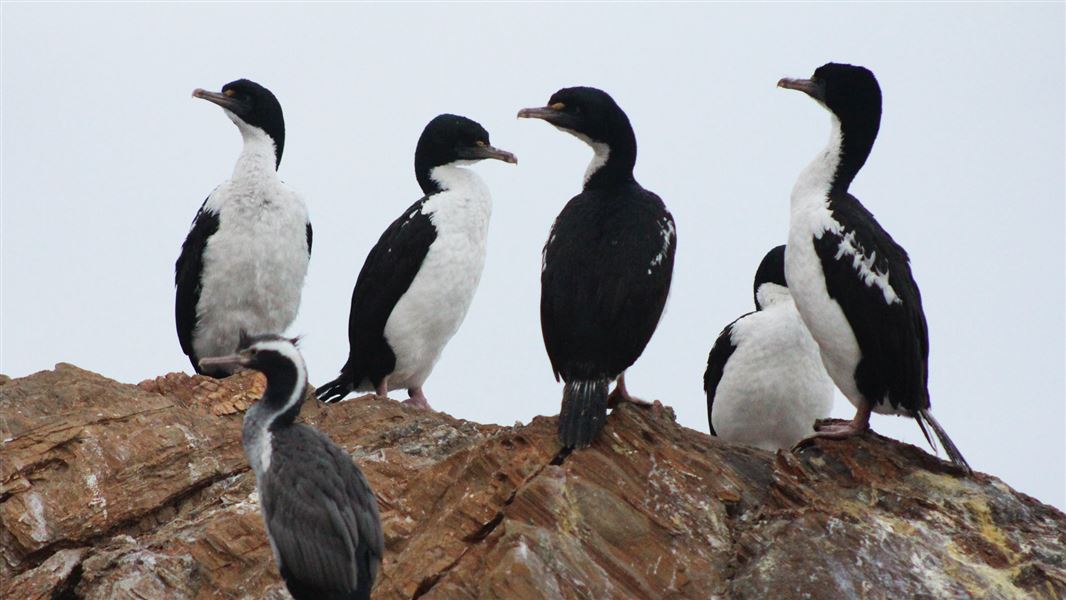Date: 18 December 2024
DOC Ranger Dan Palmer says it is a big relief after their breeding seasons from 2021 to 2023 were atrocious.
When the king shag working group (Marlborough District Council, DOC, Ministry for Primary Industries, iwi, Marine Farming Association, and researchers) started studying them in 2015, the population was estimated to be 839.
“Unfortunately, from 2021-2023 king shag suffered badly from winter storm events in La Nina weather conditions,” Dan says.
“Low-lying nests were swept away by storm surges, heavy rainfall flooding out nest sites, and high sediment loads in the Marlborough Sounds made it harder for birds to see food like flounder on the sea floor.”
A population census in 2024 estimated a total population of 646. This was a drop of 23% since 2021, likely due to three poor breeding seasons with very few chicks produced.
“However, king shags did incredibly well in the El Nino conditions of 2024. The cooler, drier winter, without big storm events improved their nest survival.
“So, although the last population census was the lowest in 10 years the population now looks likely to climb, with a total of 198 chicks fledging in the 2024 season.”
Dan says until 2015 king shags hadn’t been closely studied and we’re only just coming to grips with their population cycles.
“We know their preferred habitat is somewhat challenging for survival – they like cold, southerly-facing rock stacks.
“They also dive up to 70 m for food, which might sound like a long way but is actually fairly shallow compared to other shag species.”
Dan says people can help king shags by sharing space.
“Boats should keep a good distance from their breeding and roosting colonies as king shags are flighty and easily disturbed.”
For future resilience, DOC is investigating mitigation measures including the potential to use dummy nests to attract the shags to sites that are less vulnerable to extreme weather conditions due to climate change impacts.
Contact
For media enquiries contact:
Email: media@doc.govt.nz
